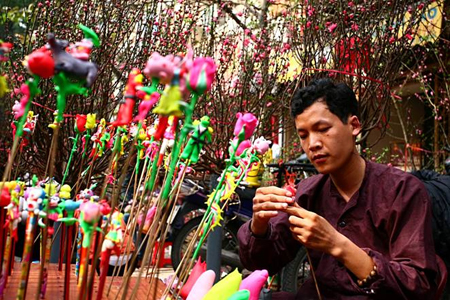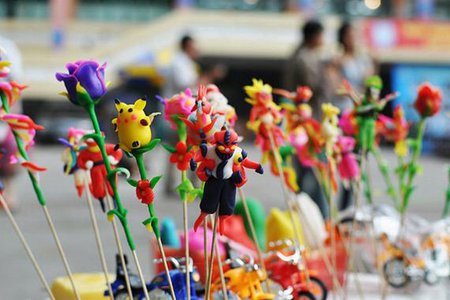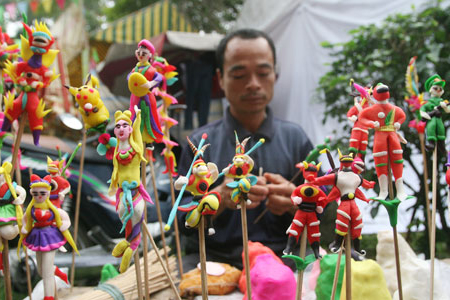Located in Phu Xuyen District, a suburb of Hanoi, Xuan La village is the most well-known and age-old (more than 300 years old) village in Vietnam for the inimitable handicraft product, symbolizing for the unique Vietnamese beauty and culture- to he (toy figurines made from glutinous rice powder). “To he” embodies a lot of the sentiment, honor and industry that began with Xuan La villagers long, long ago. Historically, “to he” is a traditional toy for Vietnamese children. From sticky rice flour and pigment, the artisan can shape the dough into edible figurines such as trees, animals, flowers, trees or characters from folk stories. Though “to he” is not a particularly difficult job, artisans must know well how to combine different colors in order to produce a lively effect.

Beautiful and cute little “to he” products draw both children and adults enjoying marveling at the way beautiful flowers, animals or cartoon characters created by skillful and creative artisans, only with simple tools including a tray of glutinous colorful rice powder, a small comb, a bunch of bamboo sticks and a spongy box to display their products.
The craftsmen firstly grind glutinous rice into a fine powder, pour water into the mixture, and then steam it. A perfect “to he” product depends on dough preparation, rice quality and artisans’ experience.
Seven basic colors of “to he” includes green, blue, red, purple, yellow, white and black completely from natural and edible ingredients.

Xuan La village is the place where lessons of virtues and morals were passed on to the young generation.
Nowadays, Xuan La’s artisans struggle to maintain their traditional trade. Although plastic and electronic toys flood city and countryside markets, many people still come to Xuan La village or different corners of the countryside to buy “to he”.

